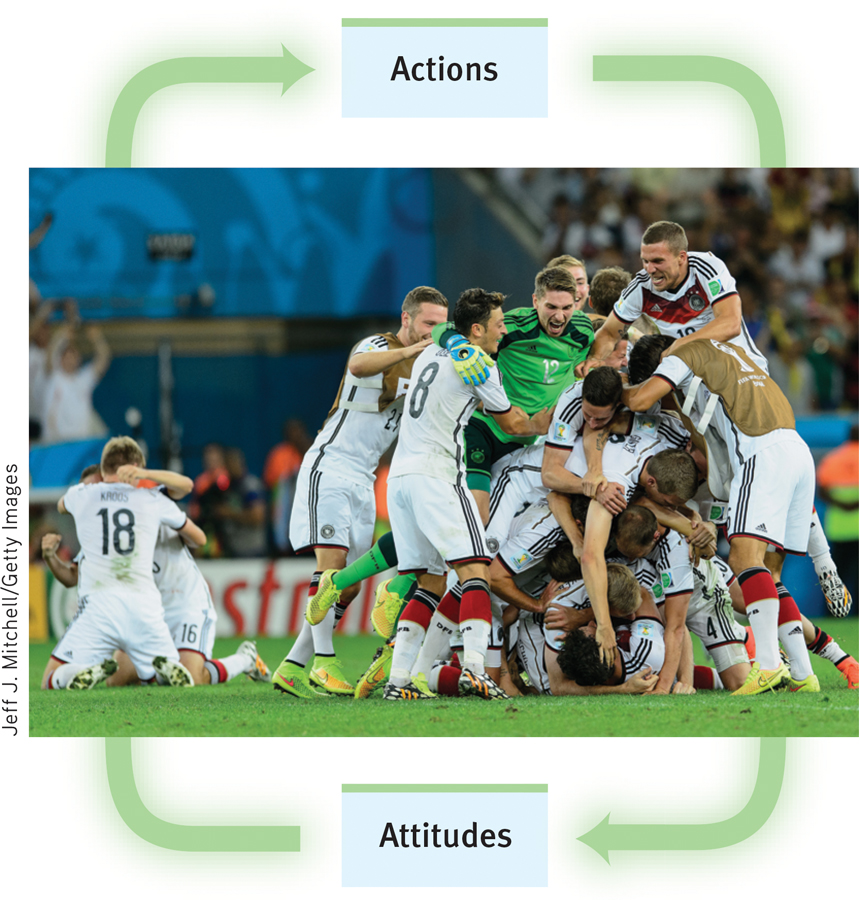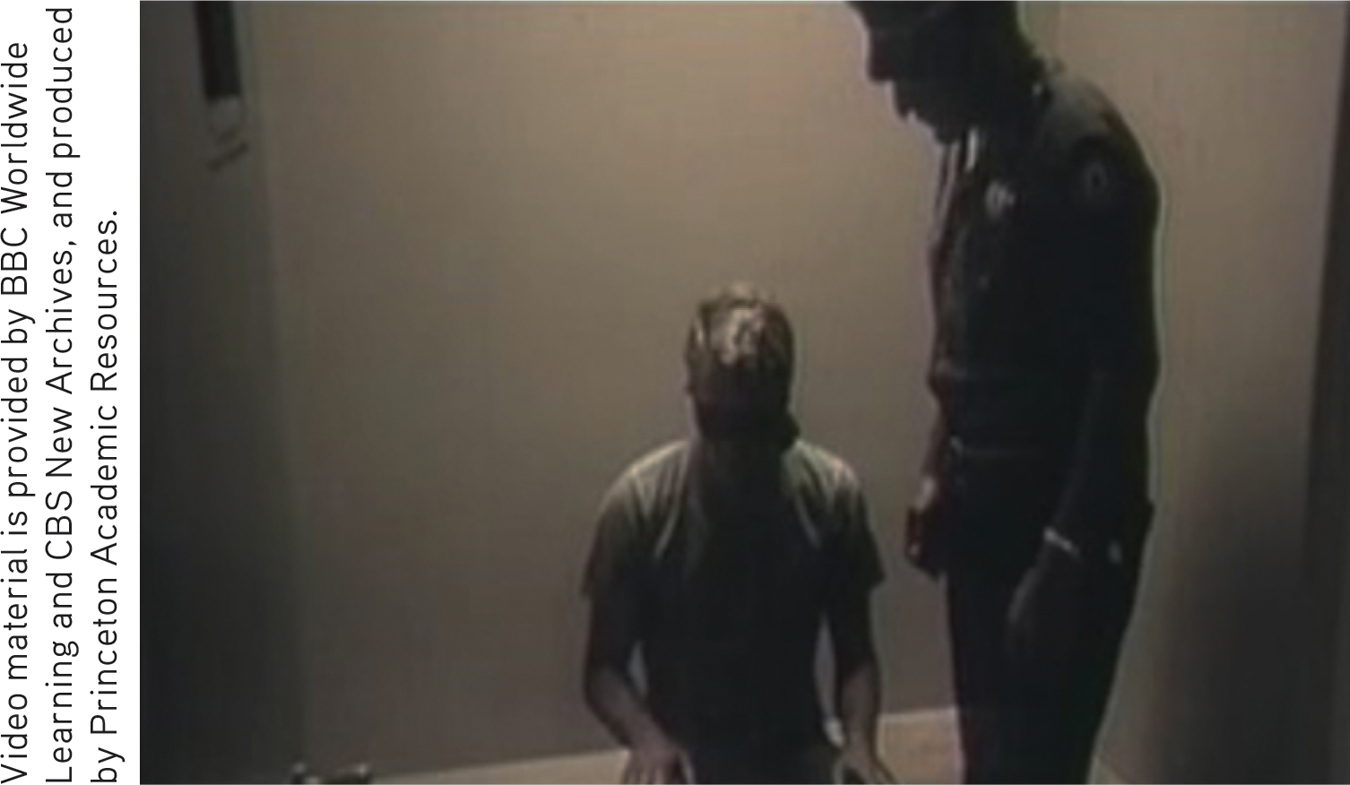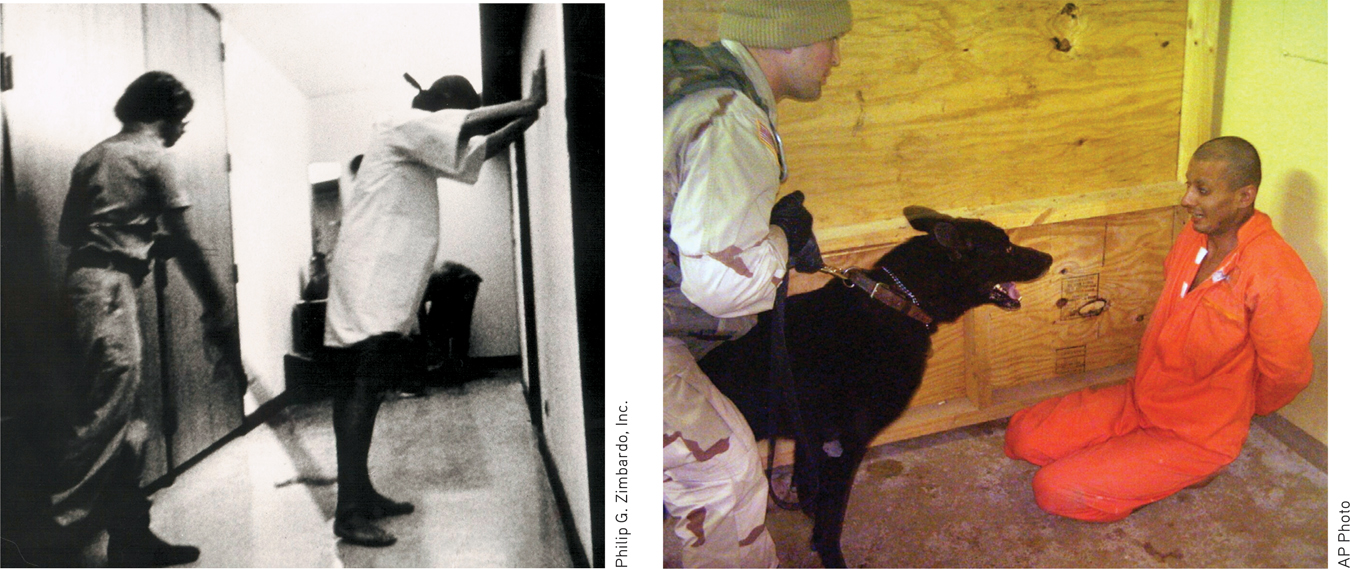42.2 Attitudes and Actions
42-
Attitudes are feelings, often influenced by our beliefs, that predispose our reactions to objects, people, and events. If we believe someone is threatening us, we may feel fear and anger toward the person and act defensively. The traffic between our attitudes and our actions is two-
Attitudes Affect Actions
Consider the climate-
Knowing that public attitudes affect public policies, activists on both sides are aiming to persuade. Persuasion efforts generally take two forms:
- Peripheral route persuasion doesn’t engage systematic thinking, but does produce fast results as people respond to uninformative cues (such as celebrity endorsements) and make snap judgments. A trusted politician may declare climate change a hoax. A perfume ad may lure us with images of beautiful or famous people in love.
- Central route persuasion offers evidence and arguments that aim to trigger favorable thoughts. It occurs mostly when people are naturally analytical or involved in the issue. Climate scientists marshal evidence of climate warming. An automotive ad may itemize a car’s great features. Because it is more thoughtful and less superficial, it is more durable.
Persuaders try to influence our behavior by changing our attitudes. But other factors, including the situation, also influence our behavior. Strong social pressures, for example, can weaken the attitude-
Attitudes are especially likely to affect behavior when external influences are minimal, and when the attitude is stable, specific to the behavior, and easily recalled (Glasman & Albarracín, 2006). One experiment used vivid, easily recalled information to persuade people that sustained tanning put them at risk for future skin cancer. One month later, 72 percent of the participants, and only 16 percent of those in a wait-
Actions Affect Attitudes
Now consider a more surprising principle: Not only will people stand up for what they believe, they also will more strongly believe in what they have stood up for. Many streams of evidence confirm that attitudes follow behavior (FIGURE 42.1).

 Figure 42.1
Figure 42.1Attitudes follow behavior Cooperative actions, such as those performed by people on sports teams (including Germany, shown here celebrating their World Cup 2014 victory), feed mutual liking. Such attitudes, in turn, promote positive behavior.
The Foot-
How did the Chinese captors achieve these amazing results? A key ingredient was their effective use of the foot-in-the-door phenomenon: They knew that people who agreed to a small request would find it easier to comply later with a larger one. The Chinese began with harmless requests, such as copying a trivial statement, but gradually escalated their demands (Schein, 1956). The next statement to be copied might list flaws of capitalism. Then, to gain privileges, the prisoners participated in group discussions, wrote self-
In dozens of experiments, researchers have coaxed people into acting against their attitudes or violating their moral standards, with the same result: Doing becomes believing. After giving in to a request to harm an innocent victim—
“If the King destroys a man, that’s proof to the King it must have been a bad man.”
Thomas Cromwell, in Robert Bolt’s A Man for All Seasons, 1960
Fortunately, the attitudes-
Racial attitudes likewise follow behavior. In the years immediately following the introduction of school desegregation in the United States and the passage of the Civil Rights Act of 1964, White Americans expressed diminishing racial prejudice. And as Americans in different regions came to act more alike—
“Fake it until you make it.”
Alcoholics Anonymous saying
Role Playing Affects AttitudesWhen you adopt a new role—when you become a college student, marry, or begin a new job—

 To view Philip Zimbardo’s 14-minute illustration and explanation of his famous prison simulation, visit the LaunchPad Video—The Stanford Prison Study: The Power of the Situation.
To view Philip Zimbardo’s 14-minute illustration and explanation of his famous prison simulation, visit the LaunchPad Video—The Stanford Prison Study: The Power of the Situation.
Role playing morphed into real life in one famous and controversial study in which male college students volunteered to spend time in a simulated prison. Stanford psychologist Philip Zimbardo (1972) randomly assigned some volunteers to be guards. He gave them uniforms, clubs, and whistles and instructed them to enforce certain rules. Others became prisoners, locked in barren cells and forced to wear humiliating outfits. For a day or two, the volunteers self-
Critics question the reliability of Zimbardo’s results (Griggs, 2014). But this much seems true: Role playing can train torturers (Staub, 1989). In the early 1970s, the Greek military government eased men into their roles. First, a trainee stood guard outside an interrogation cell. After this “foot in the door” step, he stood guard inside. Only then was he ready to become actively involved in the questioning and torture. What we do, we gradually become. In one study of German males, military training toughened their personalities, leaving them less agreeable even five years later after leaving the military (Jackson et al., 2012). And it’s true of us all: Every time we act like the people around us we slightly change ourselves to be more like them, and less like who we used to be.
Yet people differ. In Zimbardo’s Stanford Prison simulation and in other atrocity-

Cognitive Dissonance: Relief From TensionSo far, we have seen that actions can affect attitudes, sometimes turning prisoners into collaborators, doubters into believers, and compliant guards into abusers. But why? One explanation is that when we become aware that our attitudes and actions don’t coincide, we experience tension, or cognitive dissonance. Indeed, the brain regions that become active when people experience cognitive conflict and negative arousal also become active when people experience cognitive dissonance (Kitayama et al., 2013). To relieve this tension, according to Leon Festinger’s (1957) cognitive dissonance theory, we often bring our attitudes into line with our actions.
 To check your understanding of cognitive dissonance, visit LaunchPad’s Concept Practice: Cognitive Dissonance.
To check your understanding of cognitive dissonance, visit LaunchPad’s Concept Practice: Cognitive Dissonance.
Dozens of experiments have explored this cognitive dissonance phenomenon. Many have made people feel responsible for behavior that clashed with their attitudes and had foreseeable consequences. In one of these experiments, you might agree for a measly $2 to help a researcher by writing an essay that supports something you don’t believe in (perhaps a tuition increase). Feeling responsible for the statements (which are inconsistent with your attitudes), you would probably feel dissonance, especially if you thought an administrator would be reading your essay. To reduce the uncomfortable tension you might start believing your phony words. At such times, it’s as if we rationalize, “If I chose to do it (or say it), I must believe in it.” The less coerced and more responsible we feel for a troubling act, the more dissonance we feel. The more dissonance we feel, the more motivated we are to find consistency, such as changing our attitudes to help justify the act.
“Sit all day in a moping posture, sigh, and reply to everything with a dismal voice, and your melancholy lingers.… If we wish to conquer undesirable emotional tendencies in ourselves, we must … go through the outward movements of those contrary dispositions which we prefer to cultivate.”
William James, Principles of Psychology, 1890
The attitudes-
The point to remember: Cruel acts shape the self. But so do acts of good will. Act as though you like someone, and you soon may. Changing our behavior can change how we think about others and how we feel about ourselves.
RETRIEVAL PRACTICE
- Driving to school one snowy day, Marco narrowly misses a car that slides through a red light. “Slow down! What a terrible driver,” he thinks to himself. Moments later, Marco himself slips through an intersection and yelps, “Wow! These roads are awful. The city plows need to get out here.” What social psychology principle has Marco just demonstrated? Explain.
By attributing the other person’s behavior to the person (“he’s a terrible driver”) and his own to the situation (“these roads are awful”), Marco has exhibited the fundamental attribution error.
- How do our attitudes and our actions affect each other?
Our attitudes often influence our actions as we behave in ways consistent with our beliefs. However, our attitudes also follow our actions; we come to believe in what we have done.
- When people act in a way that is not in keeping with their attitudes, and then change their attitudes to match those actions, ___________ ___________ theory attempts to explain why.
cognitive dissonance